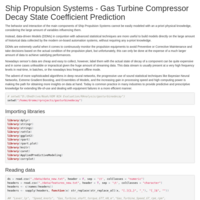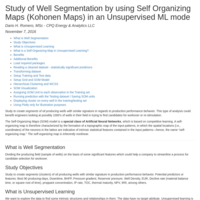Recently Published

tensorflow in R
linear regression using tensorflow in R and compare same model using lm

Study of Well Segmentation by using Self Organizing Maps (Kohonen Maps) in an Unsupervised ML mode
Study to create segments of oil producing wells with similar signature in regards to production performance behavior. This type of analysis could benefit engineers looking at possibly 1000’s of wells in their field in trying to find candidates for workover or re-stimulation.
The Self-Organizing Maps (SOM) model is a special class of Artificial Neural Networks, which is based on competitive learning. A self-organizing map is therefore characterized by the formation of a topographic map of the input patterns, in which the spatial locations (i.e., coordinates) of the neurons in the lattice are indicative of intrinsic statistical features contained in the input patterns—hence, the name “self-organizing map.” The self-organizing map is inherently nonlinear.
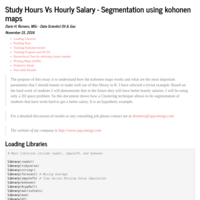
Student Segmentation using kohonen library - SOM Unsupervised Learning
This document shows how a Clustering technique (kohonen maps) allows me to do segmentation of people that have worked hard to get a better salary. Salary has been set as a per hour basis.
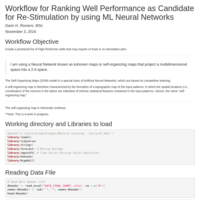
Workflow for Ranking Well Performance as Candidate for Re-Stimulation by using ML Neural Networks
Workflow Objective:
Create a prioritized list of High-Performer wells that may require re-frack or re-stimulation jobs.
ML Self-Organizing Maps Description:
The Self-Organizing Maps (SOM) model is a special class of Artificial Neural Networks, which are based on competitive learning.
A self-organizing map is therefore characterized by the formation of a topographic map of the input patterns, in which the spatial locations (i.e., coordinates) of the neurons in the lattice are indicative of intrinsic statistical features contained in the input patterns—hence, the name “self-organizing map.”
The self-organizing map is inherently nonlinear.
**Note: This is a work in progress. For details please contact me here: dromero.canada@gmail.com
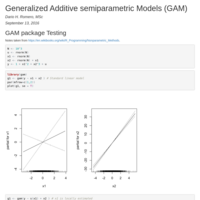
Generalized Additive semiparametric Models (GAM)
In statistics, a generalized additive model (GAM) is a generalized linear model in which the linear predictor depends linearly on unknown smooth functions of some predictor variables, and interest focuses on inference about these smooth functions. GAMs were originally developed by Trevor Hastie and Robert Tibshirani[1] to blend properties of generalized linear models with additive models.
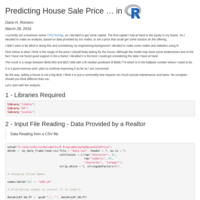
Predicting House Sale Price ... in R
I currently am a business owner [CPQ Energy](http://www.cpq-energy.com), so I decided to get some capital. The first capital I had at hand is the equity in my house. So I decided to make an analysis, based on data provided by our realtor, to set a price that could get some traction on the offering.
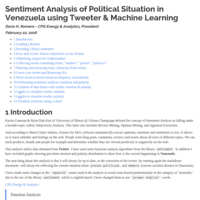
Sentiment Analysis of Political Situation in Venezuela
Analysis based on data recently obtained from Twitter
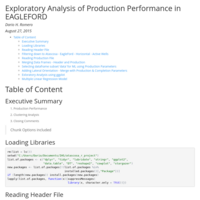
Exploratory Analysis of Production Performance in EAGLEFORD
Exploratory Analysis devoted to provide an input to a Machine Learning model that will serve as a decision taking for further in-depth analysis of potential workover candidates. [This is a work in progress.]
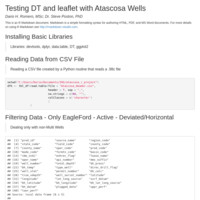
Testing Libraries - Analyzing Wells on EagleFord in Atascosa County
We are creating an automated workflow to de-noise, analyze, and predict future behavious of wells drilled in EagleFord - Atascosa County.
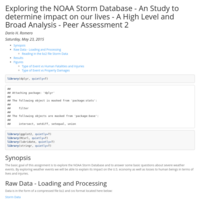
Exploring the NOAA Storm Database - An Study to determine impact on our lives
This Analysis comes to the public to show the impact on human lives and our surrounding due to the devastating effect of nature events, like tornadoes, blizzards, hurricanes and others.

Exploring_the_NOAA_Storm_Database
Version 0 of the Analysis of NOAA Storm Database as a pre-requisite to the Peer Assessment 2 in the Course Reproducible Research of Coursera.
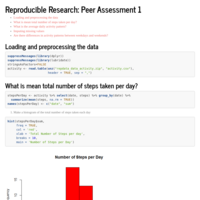
PA1_template
Document showing results of an analysis for the Course Reproducible Results in Coursera - May/2015
